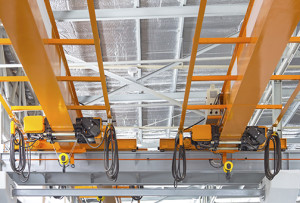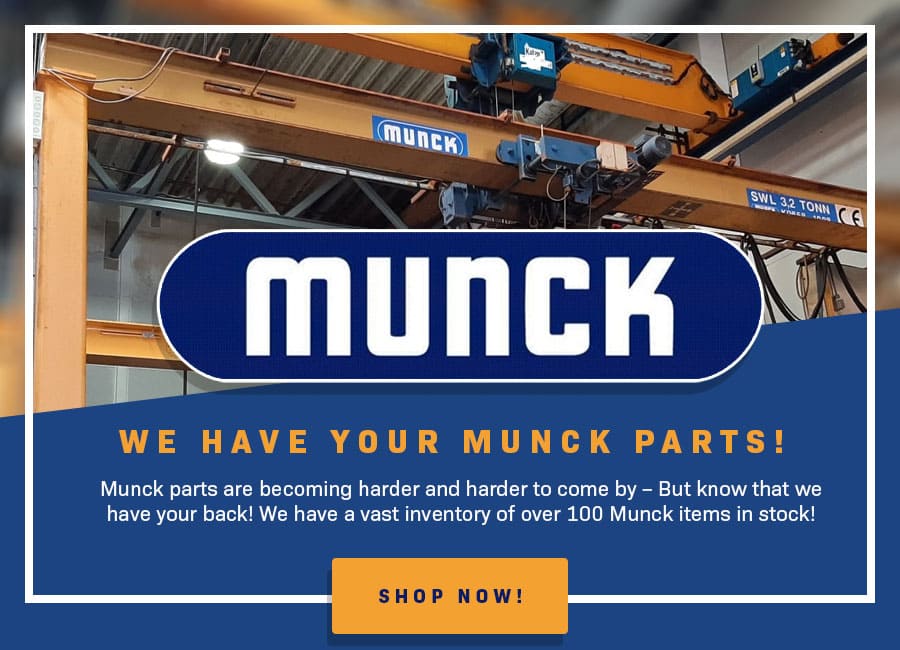Optimize & Protect Your Production Team with Overhead Equipment
Leave a CommentIndustrial material movers can be divided into two categories: on-floor and overhead. More and more businesses are discovering the advantages of replacing their traditional on-floor movers, such as trucks, forklifts, and fixed conveyors, with overhead equipment for material handling within facilities. Overhead movers include three main types: cranes, hoists, and monorails.
 Cranes utilize hooks, hoists, magnets, and other devices to transport loads. A crane’s operational range depends on the axes and rotational capabilities.
Cranes utilize hooks, hoists, magnets, and other devices to transport loads. A crane’s operational range depends on the axes and rotational capabilities.
Hoists are simple but adaptable pieces of machinery that use wires, ropes, or chains to move freely suspended loads. Hoists can be powered manually, electrically, or by air. Monorails operate like overhead conveyors; they run along fixed paths in the ceiling using a single circuit or network of routes.
Compared to on-floor movers, each type of overhead material handling system provides the following benefits:
- Reduced footprint — Cranes and hoists require some floor-based support structures, but these can be strategically placed at facility edges and corners to minimize their footprint. Monorails run on tracks installed directly into the ceiling and, therefore, leave no footprint on the floor at all.
- Improved health and safety — Overhead movers reduce physical labor, which enhances ergonomics and removes employees from potential danger zones.
- More power — Cranes, hoists, and monorails are typically stronger than on-floor systems. They have greater load capabilities and more lifting mechanisms to handle a variety of loads.
- Increased productivity — Overhead movers allow for direct-path transportation, as opposed to on-floor movers that must navigate around various obstacles on the floor. The fixed monorail system reduces the opportunity for human error, which in turn lowers production losses.
Traditional on-floor material handlers create many facility limitations. Bulky ride-on movers generate clutter and restrict floor space because they require wide pathways and intersections to maneuver. Even when they are not in operation, forklifts and ride-on movers take up a large amount of space on the floor and get in the way of production.
On-floor machinery also depends on employee operation, making workers prone to long-term health risks and workplace injury. If a load is unbalanced or too heavy, forklifts can topple over.
Impaired visibility on ride-on machinery can result in workers getting caught between walls or driving off of loading docks. Raised conveyor belts force employees to strain themselves reaching for objects and risking entrapment of clothing or limbs in machinery. Overhead movers minimize all these risks.
American Crane & Equipment Corporation (ACECO) is equipped with the resources to fit both standard and custom crane solutions. With over 40 years of experience, our team thrives on a problem solving culture.
To learn more about the advantages of utilizing overhead equipment, we invite you to read our eBook, “The Ultimate Cheat Sheet for Overhead Equipment.”





